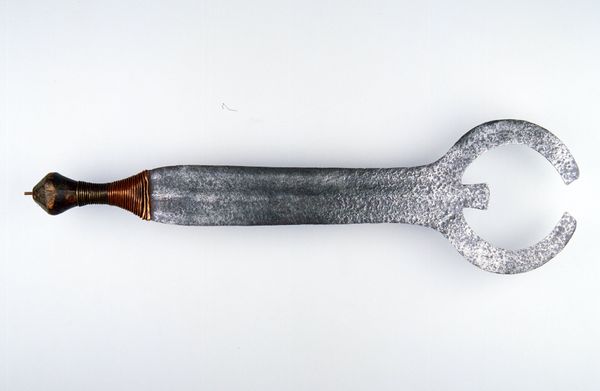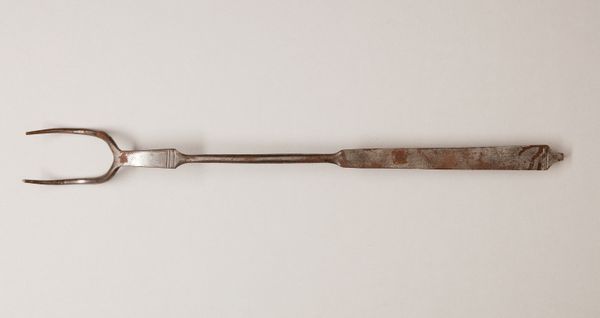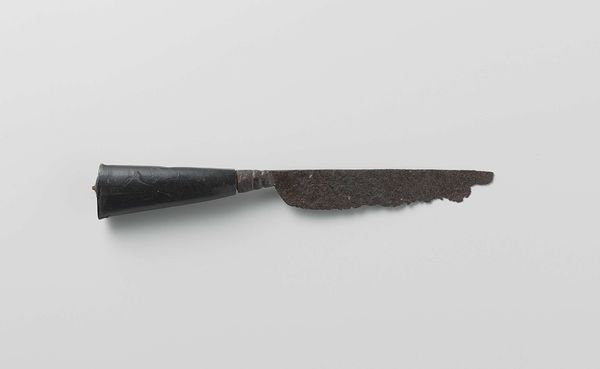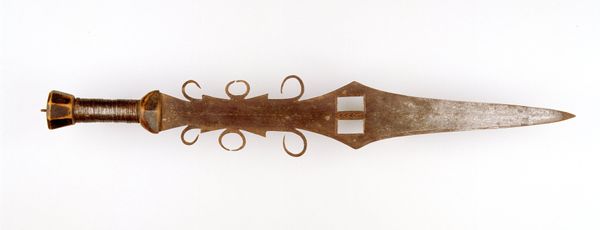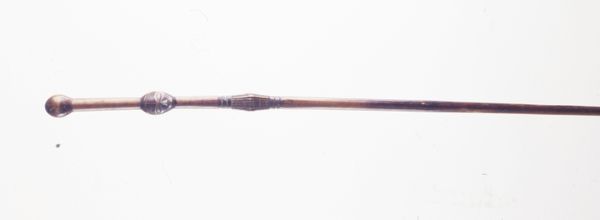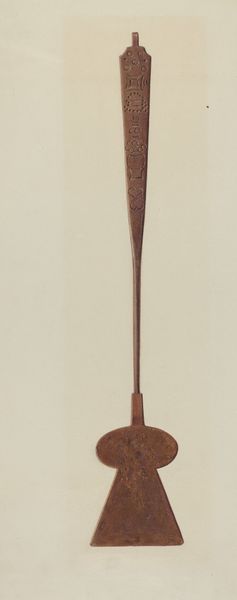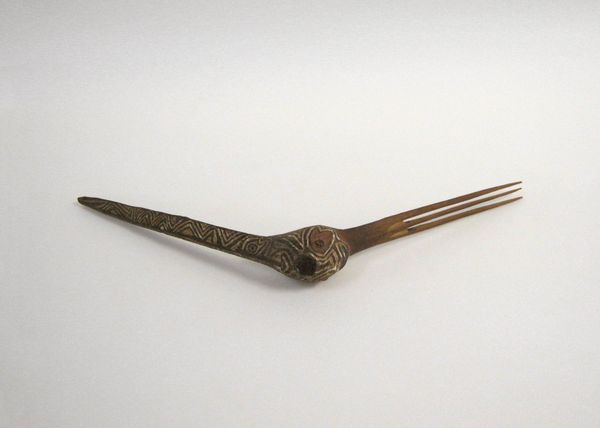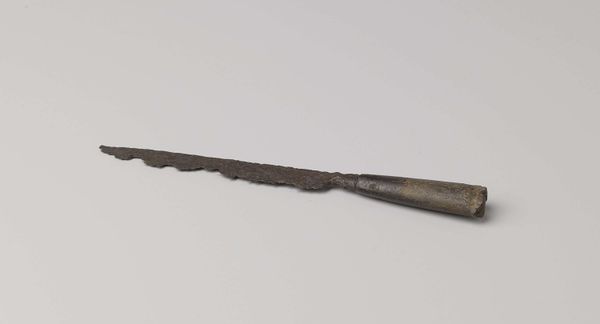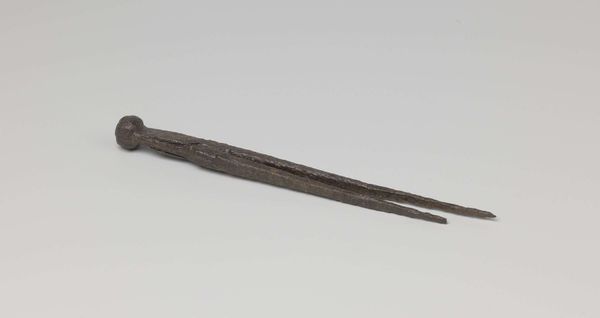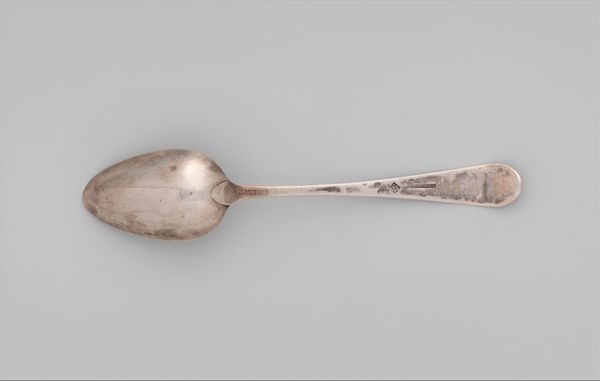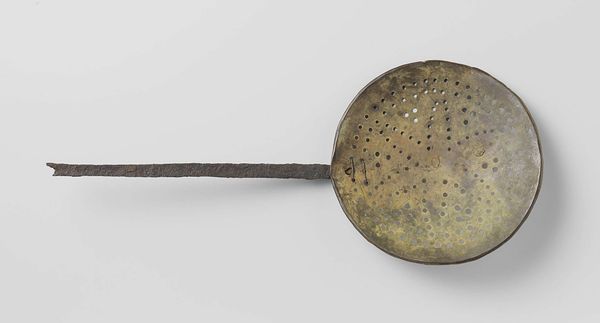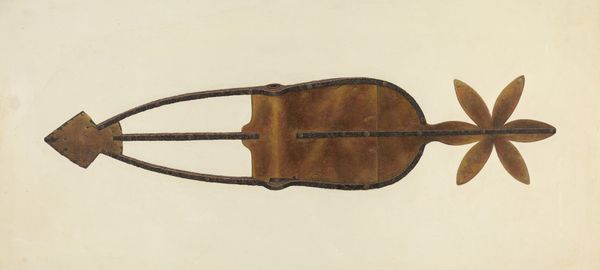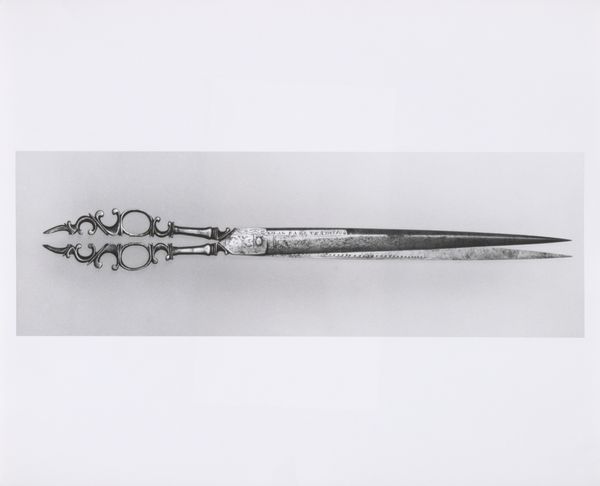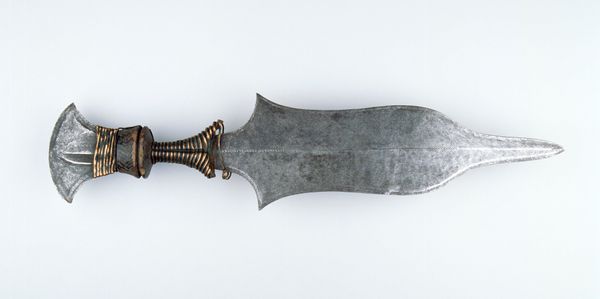
metal, sculpture, wood
#
metal
#
sculpture
#
sculpture
#
wood
Dimensions: 23 1/4 x 4 5/16 x 2 1/4 in. (59.06 x 10.95 x 5.72 cm)
Copyright: Public Domain
Curator: This is a Luba Short Sword dating to the early 20th century. The piece, which is at the Minneapolis Institute of Art, features a metal blade and wood handle. Editor: My first impression is its biomorphic blade. It looks almost like a stylized leaf, but with an obviously sharp edge that signals its intent. A deadly paradox of beauty. Curator: The design certainly complicates a solely utilitarian understanding. Blades like these, produced by the Luba people of the Democratic Republic of Congo, went far beyond battlefield functionality. Editor: Functionality for sure. This blade has a fascinating central ridge that acts as the formal spine that bisects the visual narrative into symmetrical halves. What structural role do you think aesthetics played in these social dynamics? Curator: Indeed. This type of sword symbolized leadership and authority within Luba society. Possession of one likely denoted a chief or person of considerable standing. The craftsmanship, the etched detailing on the blade—they underscore this power dynamic. And from a purely symbolic angle, think of how a society defines prestige objects and who gets to have them. Editor: These details certainly point toward value construction in a highly symbolic fashion. Consider also the intersection of cultural values and aesthetic codes, for example, the polished versus unpolished wood on the handle. Curator: Good observation. Now that you mention it, I think about how display in museums frames such objects. Do we strip away layers of meaning when we reduce them to simply art? Editor: Always! But engaging directly with a work like this is not only about social and historic interpretation. It gives the opportunity to consider how line and texture speak—regardless of what any history tells us. This piece holds multiple entry points for interpretation. Curator: Agreed, the materiality allows the form itself to stand out, speaking to anyone from any walk of life who wants to have a look. It is interesting how our different vantage points nonetheless end with a recognition of the power imbued in an object like this.
Comments
No comments
Be the first to comment and join the conversation on the ultimate creative platform.
